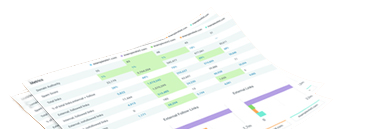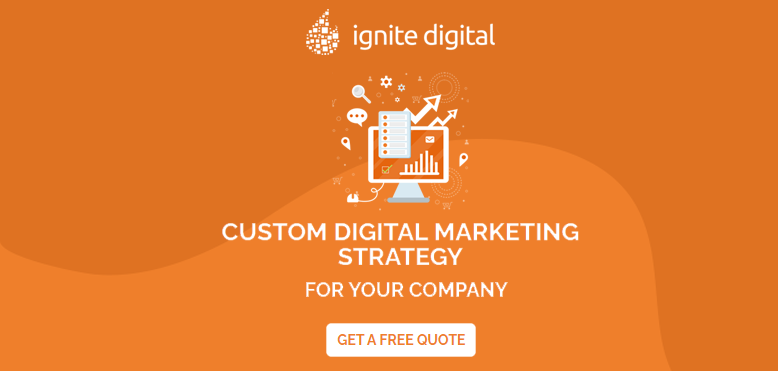Are you looking for ways to take your digital marketing strategies up a notch? Personalization is the name of the game these days, and leveraging customer data has become more important than ever.
But with so many different sources of customer data out there, it can be hard to keep track of all of them and make sure you’re targeting customers correctly.
That’s why Customer Data Platforms (CDPs) have been quickly gaining traction as powerful tools that enable businesses to gain insights into their customers and create tailored digital experiences that help deliver results.
In this blog post, we will explore how CDP examples work and provide use cases on how they can improve personalization strategies to engage customers more seamlessly and effectively than ever before.
What is a Customer Data Platform (CDP)
A customer data platform (CDP) is a powerful tool that helps companies make sense of their customer data. With the explosion of online shopping and social media, businesses are collecting more data than ever before. So, why use a CDP?
A CDP organizes this data into a unified profile for each customer, giving businesses a complete view of each individual’s preferences, needs, and behavior. This, in turn, allows companies to:
- Personalize marketing messages
- Improve customer service
- Make more informed business decisions
Some common customer data platform use cases include improving customer retention, cross-selling and upselling, and optimizing marketing campaigns. CDP examples include Segment, Tealium, and Lytics.
In a world where data is king, a CDP is a must-have for any modern business looking to stay competitive. Don’t just take our word for it, numerous customer data platform case studies have shown the tangible benefits of using a CDP.
Why Use a CDP for Personalization Strategies
In today’s digital age, personalized experiences have become essential for businesses to stand out from the competition. To achieve this, customer data platforms (CDP) have become a go-to tool for many companies.
Why use a CDP? The use cases of a CDP are vast, from collecting and organizing customer data to analyzing and utilizing customer insights for personalization strategies.
Many companies have already benefited from using a CDP with successful customer data platform case studies to showcase their results. By using a CDP, businesses can:
- Improve customer engagement
- Increase conversions
- Provide a better customer experience
Overall, it’s clear that using Customer Data Platform examples is the key to unlocking successful personalization strategies to outpace and outperform the competition.
How to Leverage a CDP for Personalization
As businesses strive to deliver personalized experiences to their customers, Customer Data Platform examples have become increasingly important. A CDP brings together data from multiple sources such as CRM, web analytics, and social media to create a unified view of the customer.
So, why use a CDP? This allows businesses to gain deep insights into their customers’ behaviors, preferences, and needs. With such rich data, businesses can create:
- Highly targeted campaigns
- Personalized recommendations
- Tailored experiences that resonate with each customer
Companies across various industries have successfully leveraged CDPs to achieve their personalization goals. Let’s take the example of a healthcare provider that used a CDP to create personalized campaigns promoting health screenings based on their patient’s medical history.
Such customer data platform use cases demonstrate how powerful this technology can be in driving better customer experiences and increasing revenue.
Use Cases of CDPs in the Real World
In today’s data-driven world, managing and utilizing customer data has become more important than ever. A customer data platform (CDP) is a powerful tool that has gained significant traction among marketers and business owners in recent years.
The uses of CDPs are many, and there isn’t a one-size-fits-all approach to employing them. Some of the most common customer data platform use cases include:
- Customer segmentation and targeting
- Personalization of customer experiences
- Improving customer retention
Organizations across various industries use CDPs to gain insights into their customer base and deliver the right message at the right time through the right channel.
For example, Hilton Hotels & Resorts leveraged Customer Data Platform examples to streamline data collection and unify their customer data, ultimately leading to more targeted and effective marketing campaigns.
With customer data platform case studies like this, it’s no wonder that most CDP examples have quickly become indispensable tools for businesses seeking data-driven success.
The Benefits of Using a CDP for Customer Engagement
As businesses continue to grow and adopt new technologies, customer data platforms (CDP) are becoming increasingly essential. Customer data platforms are powerful tools that help businesses collect, unify, and activate customer data across multiple channels.
With many CDP examples and customer data platform use cases available, businesses can tailor their use of a CDP to meet their unique needs. So why use a CDP for customer engagement? By utilizing a CDP, businesses can:
- Anticipate customer behavior,
- Provide personalized experiences
- Better understanding of the customer journey
Customer data platform case studies have shown that businesses using Customer Data Platform examples have experienced significant increases in:
- Customer engagement
- Loyalty
- Retention
The benefits of using a CDP for customer engagement can have a major impact on the success of any business.
Tips for Getting Started with CDPs
If you’re looking to improve your customer data strategy, a customer data platform might be the solution you need.
With its ability to centrally manage and unify customer data, a CDP has become a powerful tool for businesses looking to drive growth by better targeting their audiences. But where do you start with CDPs?
- Consider which customer data platform use cases would most benefit your business
- Explore some CDP examples and customer data platform case studies
- Be sure to understand why use a CDP in the first place
With these tips in mind, you’ll be ready to take your customer data strategy to the next level with a CDP.
Businesses should look into how Customer Data Platform examples can help personalize and fine tune their digital marketing strategies.
CDPs offer a groundbreaking new way to access customer data, enriching strategies with the insights needed to deliver targeted messages/experiences that engage customers in more meaningful ways.
Not only do they improve customer experiences, but also create an efficient data ecosystem that streamlines the process of collecting and analyzing customer information. For these reasons, many businesses have already seen great returns from investing in CDP.
Depending on your business size and needs, it may be wise to partner with a service provider who can guide you through implementation and ensure optimal results, so start by considering what best fits your company’s capabilities and objectives!




